The Loop 10

Sisters are doing it for themselves
Empowering your care team
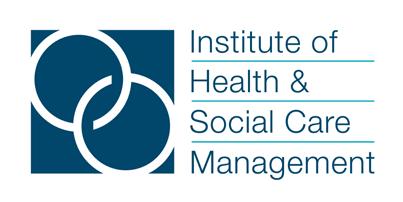
Top 5 tips for HR leaders

IHSCM Quarterly E-magazine JULYSEPTEMBER 2023
ISSUE
Editorial
IHSCM Women and Leadership“Sisters are Doing it for Themselves.”
ESG & the Triple Bottom Line with Utopi
My 5 top tips on what HR leaders can do when faced with wide spread staff strike within the health and care sector.
Voror Helping to Improve Citizen Health
Contents
6. 10. 12. 16. 10 ISSUE
4.
20.
Ensuring a Successful Start to Reducing Agency Spend Across Systems
24. 28. 32.
Empowering Your Care Team
‘Guerrilla’ Campaign Launched to Bust Myths About Care Homes
The Importance and Benefits of Patient and Public Involvement and Engagement
CEO: Jon Wilks, Chairman: Roy Lilley, Strategic Advisor: Shane Tickell, Director of Social Care: Adam Purnell, Membership Manager: Emma Caton, Operations Manager: Jade Maloney, Social Media Administrator: Rachel Jury, Operations Administrator: Charlotte Joseph, Digital Content Consultant: Luke Farmer

EDITORIAL
Welcome to our latest issue of The Loop, our IHSCM magazine by members for members .
As we recognise the 75th birthday of the NHS it seems appropriate to reflect on what our Institute has done over the last 75 years (and more – the IHSCM was celebrating its 46th birthday in 1948!).
75 years ago, our Institute was rather different than it is today. In 1948 management and leadership in the new NHS was dominated by white men. Virtually every Chair or Chief Executive was male (in fact I can’t find any evidence of a female CEO at all back then – please drop me a line if you know differently) and males were the overwhelming presence in the boardrooms of Trusts. Moreover, outside of the nursing profession, most consultant roles were filled by men.
With the second world war having drawn to a close 3 years’ previously, Britain was a nation mired in debt and economic poverty. Look at photos of the day taken in factories, high streets, housing estates, and pubs. Life was tough and making a living was a daily struggle for millions. Meanwhile, recently returned servicemen and women were having to adjust to civilian life and one can only imagine the difficulties that such an adjustment would entail. All of this makes it
004 THE LOOP
Executive
JON WILKS Chief
even more remarkable that Aneurin Bevan was able to pilot the bill for the formation of the NHS into statute. But pilot it he did – for a nation very different to that which we inhabit today.
Look at those same photographs. Obesity was extremely unusual. Long term conditions such as we know them now did not consume huge percentages of the NHS budget. Our nation, despite the outstanding service of overseas men and women, was not multi-cultural, certainly away from the port cities. As I mentioned earlier, workplaces were predominantly the preserve of men, particularly so in management and leadership roles. So, the business of managing the health service you would imagine came with a completely different set of challenges than those you may face today.
But did they? I wonder.
Certainly, good jobs were scarce in post-war Britain and there was a class and employment hierarchy far more rigid than is the case today. People had become conditioned to doing what they were told to do from above. Employment law was nothing like as fair and equitable as it is today and the idea

of whistle blowing wouldn’t even be contemplated.
But the good managers still understood that thoughtfulness, fairness, consideration and promotion of employee well being were vital elements to productivity and success. I absolutely believe that the Institute of the post war years understood that and promoted those virtues in articles and symposia. Certainly there were plenty of draconian health service leaders that ruled by fear and intimidation but better ways of motivating and inspiring people to give of their very best have emerged and I suggest that your institute has played its part.
With the launch of the long term workforce plan timed to coincide with the 75th anniversary, I think that we should all be obliged to take stock of how lucky we are to still have a national health service and also to reflect on how we manage and lead our people today.
Bevan would expect nothing less from us.

005
Amanda Reynolds MD, Director & Founder, Blend Associates
IHSCM Women and Leadership“Sisters are Doing it for Themselves.”
Amanda Reynolds MD and founder of Blend Associates Ltd is excited that she and her coaching colleagues are collaborating with IHSCM to support the Women in Leadership Programme

006

007
As Annie Lennox and Aretha Franklin famously sung:
“Sisters are doing it for themselves, standing on their own two feet and ringing on their own bells…. We got doctors, lawyers, politicians to...can you see there is a woman right next to you…”
In a world where women make up a significant number of professional roles across the NHS and social care, we want to explore how women can be supported to thrive in the workplace.
With 88.6% of nurses & health visitors, 42.5% of ambulance staff, 77.6% of scientists and 62% of managers and 64% of medical school entrants and 43% of accountants are now women. Yet, most of the senior roles across professionals are still predominately male and white male too. We want to explore why is that and what is holding women back. We wonder is it us or is it the context?
Sally Helgesen & Malcolm Goldsmith suggest in How Women Rise:
“We don’t appreciate the role external barriers play in keeping women stuck. Impenetrable old-boys networks, sexist bosses, men who seem incapable of listening to women or who claim credit for their ideas in meetings, career tracks that assume families do not exist, performance
review criteria subtly designed to favor men, the unconscious biases that shape hiring and promotion: these impediments are real and unfortunately continue to play a role in stymieing women’s advancement. “
Despite all of these challenges we face we want to explore with you how sisters can do it for themselves and share some tricks and tips along the way.
Commencing 27th June, we will be providing 3 live and interactive webinars where we will explore women as leaders, the challenges they face and the potential for coaching to support this. The programme will be supported by Raechel Pooley and Dorinda Nartey.
We will use a format of webinars consisting of a short presentation of data, context, useful approaches, fireside chat with a speaker and audience breakout rooms for questions.

The upcoming webinars are as follows:
13th July 12pm – 1pm: Women Leaders and Neurodiversity - With guest speaker Rachel Pooley. Book your place.
12th October 12pm – 1pm: Women Leaders of Colour, in the room, but here is the power and influence. – With guest speaker Dorinda Nartey. Book your place.
008 THE LOOP
What do you want from your healthcare data?
We process and store patient data, from any supplier, and in any format, to provide a single instance of cleansed and normalised data; that ’s currently 110TB, and growing daily, of cleansed, normalised, and stored data relating to almost 16 million individuals.
Any coded data (SNOMED CT, CTV3, Read2, ICD -10, OPCS- 4 or any national/local code system), in any format (CSV, HL7V2...), mapped to a single code system, stored in a secure database, and then made available to you.

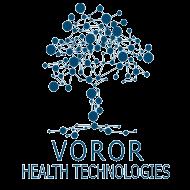
Your data, your knowledge. Your patients, your clinicians. Your region, your ICS.

We collect once, and use many times for real time:
Population Health ✓
Planning ✓
Research ✓
Direct Care ✓
Projects that use our data service include:
Contact us to see how you can get the most from your data and improve patient care.

ESG & the Triple Bottom Line with Utopi
Environmental Social and Governance (ESG) as a solution in Health and Social Care is still quite unknown, with many Care Homes and Healthcare Facilities not having a clear understanding or strategy in place.
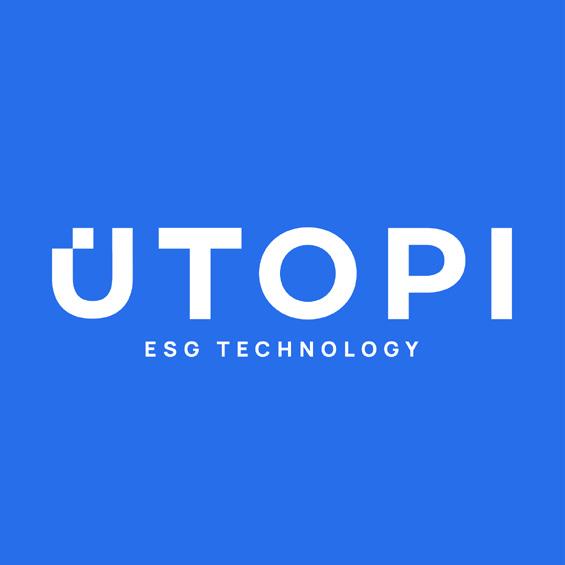
0010 THE LOOP
But what if we were to tell you that value in ESG sits along the value chain? For investors and asset owners, ESG can be all about Green Finance and accessing funds through ESG alignment, for operators and front-line staff it’s about being able to understand impact and always prioritise resident wellbeing, and for the residents themselves and their loved ones it’s about making sure the best care is always paramount throughout later life.
So, if ESG is a solution to the very real threat of climate change and it can help drive the triple bottom line of people, planet, and profit – what is the context for Health and Social Care?
The experts at Utopi (the specialist ESG technology for multi-tenant real estate) break it down:
1. People: Attract the best talent.
With the core of Health and Social Care being people, it makes sense to start here, and ESG helps people across the value chain:
• Residents – When it comes to patients and residents, their wellbeing is priority number one. So, in the context of ESG, it’s all about driving insights that can help understand their wellbeing; and then armed with that data it’s about being accountable for positive change.
• Front-line Staff – With attracting and retaining staff being a difficulty for all areas of Health and Social Care, it’s key to understand that ESG can be a great way to get the best team on board. Millennials especially post-covid are attracted to organisations who have a clear ESG strategy and are actively prioritising positive change.
• Operators and Managers – A strong ESG strategy also brings huge benefits for Operations teams and Managers of Health and Social Care real estate. The saying ‘knowledge is power’ comes to mind here, and ultimately the ability to use real-world data to enhance ESG alignment can bring about positive change, cost reductions and operational efficiency.
2. Planet: Improve ESG performance by 20%.
When it comes to ESG, the core principle of environmental responsibility is driving us closer to net zero carbon; and of course, reducing the impact of climate change. In 2023, CQC ratings have changed to reflect this increased encouragement on ESG alignment, and Utopi ESG technology can ensure you have the data required to report on ESG performance and boost those all-important CQC ratings.
3. Profit: Reduce costs and emissions by 20-30%.
Investors and financiers are increasingly interested in businesses that actively manage their environmental and social risks, while delivering sustainable value. Utopi ESG technology collects the data required to gain improved scoring on asset level certifications such as GRESB, BREEAM, Fitwel; and is proven to reduce energy costs by 20%-30% through benchmarking and impact measurement that drives meaningful action.
So, are you in charge of your real estate’s ESG performance? are you driving towards net zero? Utopi is the solution.

0011
My 5 top tips on what HR leaders can do when faced with wide spread staff strike within the health and care sector.
William
Shakespeare's Richard III
starts with the first two lines
"Now is the winter of our discontent”
If Shakespeare was here with us he may say 2023 is the year of discontent, as here in the UK we are facing widespread strike actions. Focusing on the NHS health and care sector we have witnessed an unprecedented level of strike action taken by junior doctors nurses, paramedics, and various other employees from other sectors have caused widespread issues for the service users. In this piece, I hope to share my top 5 tips on what the HR leadership team can do when faced with an employee strike actions.
Rayhan Abdullah Zakaria, Chartered MCIPD, FHEA, FRSA, AIHSM, MBAM, Doctoral researcher at Chester Business School

0012 THE LOOP

0013
Understand the context behind staff strike actions
Within the NHS and the wider care sector, the top three generic strike reasons are to do with pay & benefit, staffing level, privatisation and outsourcing. These are long-standing and complex issues and the leadership team must focus on understanding these issues. Looking at it holistically and going beyond just the cause but also look at the wider narrative, the philosophy, emotion, views and values which are all intrinsically connected within the deeper fabric of these strike actions.
Listen and communicate with employees

The leaders need to understand the employee's grievances and the best way to do this is to start communicating with them by listening and understanding their concerns, feelings, views, experiences, and unique stories. There needs to be open and honest communication with employees and with the wider stakeholders. Everything at this stage must be documented with deep supporting commentary.
Focus on the underlying issues
Leaders need to understand that grievances don't manifest suddenly out of thin air. Generally speaking, there are complex underlying issues which come together to become a negative energy within the workforce. Here leaders must be able to dig deeper such as the ongoing pay, staffing and privatisation/ outsourcing issues. Here leaders may need to re-evaluate the pay, and staffing policies and look at the wider framework of operation, and experiences, from different stakeholder perspectives.
Negotiate or involve a mediator
Leaders need to see the unions in a positive light as they are the collective voice of the disenfranchised employees. There needs to be a voice of cooperation and not competition
when negotiating with the unions. At the same time, this notion of cooperation needs to be embraced by all the stakeholders to move forward. Research has shown that cooperative labour management is often better than adversarial labour relationships. The bottom line is that the leaders should consider the wider stakeholders' demands and make reasonable counteroffers. If it helps the leaders could involve mediators to facilitate negotiations and resolve disputes.
Fulfil all legal obligations
Leaders must pay attention to all the legal obligations, For example when dealing with pay and benefit-related disputes it is a must that leaders full fill all labour laws, minimum wage laws, collective bargaining agreements etc. Be aware of what legal requirements employers must meet, followed by what is being demanded by the unions and what can be offered without having any major negative effect on the end service users and the wider stakeholders. It is always a good practice to look at disputes holistically rather than looking at them in a silo mentality.
Final thought
Organisations can be a social systems as it depends on the type of lens an organization is viewed from. As leaders, we need to balance the reality and the expectation. We need to be connected to the real world and be aware of the wider local, national, and global narrative of employer and employee relationships. We need to be fair, and honest and know that healthcare organisations are there to not only meet targets but also to create value within the wider community, which is difficult to quantify. Leaders need to have empathy and the same goes for the unions because without empathy, fairness, transparency and honesty a winter of discontent could soon become a year of discontent.
0014 THE LOOP

Voror Helping to Improve Citizen Health
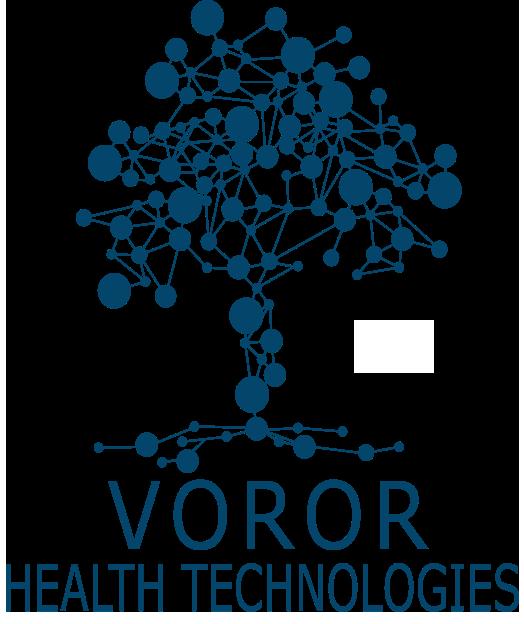
0016 THE LOOP
Healthcare Data Platform
Specialists - at the forefront of Healthcare TechnologiesCapturing data once, for real-time Direct Care, Population Health, Planning, and Research
The Voror team design, architect, develop, and support the Discovery Data Platform; an open-source solution designed to aggregate patient data from multiple sources in a common ontology for driving better patient outcomes, research, and analytics in one package.
One example of how Voror cleansed data adds value is the NHS 111 Discovery frailty flagging project, which utilises Discovery data to flag key information to NHS 111 call handlers, improve the patient pathway and experience, and reduce the unnecessary use of emergency services and admission to A&E.
“As a London Ambulance Service (LAS) clinician who provides clinical
expertise for NHS111 in North East London (NEL), I want to obtain access to the local NEL information within the Discovery Dataset to determine whether the caller is potentially seriously frail.”
Since November 2018, Discovery data, has helped to identify potentially frail patients using a frailty algorithm. If the specified patient has an observation for severe or moderate frailty, the algorithm returns a value of true; observations for mild frailty return a value of false. If a patient is not found in the Discovery Data Service, the algorithm returns a value of not found.
If a patient is identified as being identified, the 111 call is passed to a clinician for additional SME input. The aim, if possible, is to provide alternative, and more appropriate care for frail patients.
0017
“Prolonged stays in hospital are bad for patients, especially for those who are frail or elderly. Spending a long time in hospital can lead to an increased risk of falling, sleep deprivation, catching infections and sometimes mental and physical deconditioning. Despite this, nearly 350,000 patients spend more than three weeks in acute hospitals each year.”
NHS England - Reducing length of stay (https://www.england.nhs.uk/urgentemergency-care/reducing-length-ofstay/ )
Dora’s Story
• Dora is 87 with several long-term conditions. She is suffering from stomach pains and so phones NHS111 for advice.
• The 111 call handler asks the system - is the patient is frail?
• Discovery matches Dora’s NHS number with all of Dora’s medical records in the NEL dataset and shows that Dora has frailty indicators. Dora’s medical records are made up of GP records, numerous community clinic records, and various hospital and A&E records.
• The NHS 111 call handler refers Dora’s 111 call to a clinician instead of suggesting A&E or calling for an ambulance.
• Dora is seen by a medical professional in her own home and avoids a visit to hospital.
Frailty Figures
Since November 2018, and as of 1 June 2023, the NHS 111 Discovery Frailty Flagging project has:
• matched 3,123,666 patients
• flagged 204,908 potentially frail patients

• processed 15,615,526 API calls
That’s nearly 205,000 potentially frail patients that have avoided a potentially harmful trip to A&E or a longer stay in hospital.
More Voror
For more information on the work Voror are doing, visit voror.co.uk or scan the QR code.

0018 THE LOOP

0019
Ensuring a Successful Start to Reducing Agency Spend Across Systems
Integrated care system financial strategies this year need to address savings targets that are reaching eye-watering levels, with a national average of nearly 6 per cent – the equivalent of £6bn.
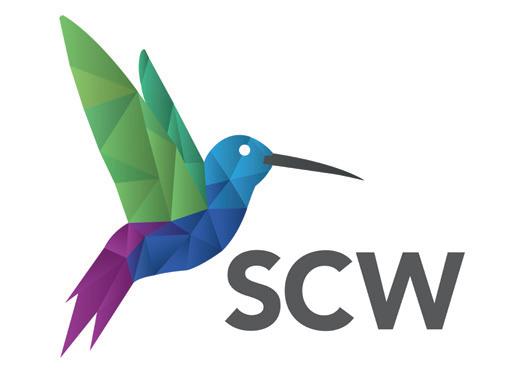
0020 THE LOOP

0021
As ICSs are being asked to find more savings to meet increasing efficiency targets, we’re seeing reduction of agency and high-cost agency spend being a real area of priority.
So as a system, how do ICSs best work together to optimise this? What role can ICBs, provider collaboratives and ICSs play in supporting reduction of agency spend?
The focus on reduction of agency and high-cost agency spend is not new. Providers have already spent lots of time and energy over a number of years exploring this, but the drivers for temporary staffing need that lead to high agency spend are complex and maintaining a transformation in this space takes lots of energy and persistence. So where is best to focus the start of a conversation on working across a system around this? Firstly, have system partners agreed to the focus of collaborative work? Is the purpose of the collaboration to optimise efficiencies through doing things once at scale across the system, to share and learn good practices across the system, to support in amplifying and delivering existing plans and actions within providers or to lean into new spaces for innovation, where providers have not got the capacity or capability to venture? Creating a clear and aligned vision that can be clearly communicated across all system partners is key for ensuring buy in, which ultimately helps secure prioritisation, sufficient resource and achievement of the desired change. Without the clear buy in and support from the system partners, moving large transformational change like this will be difficult.
Alongside a clear vision and purpose, another key tool for ensuring effective buy in is understanding the priorities, locally and collectively, and the business cases around them. This requires quite a lot of in depth of understanding coming up from local level around what is already being undertaken and, in addition, the local drivers for temporary staffing use. This may include the reason for hotspots, cultural challenges in different wards or team and local management, leadership and governance practices that are driving the needs. Often there will be organisational noise and narrative that may indicate where to look, but further deep dives are often required into local data and management practices to unpick what is driving need.
The final lens I always recommend, given the ongoing and repetitive cycle of high agency spend, is whatever plans you are building now, build them in a way that future proofs for you long term needs. This can be applied to all elements of the work – from taking a longer-term view to the vision and purpose, to planning robust dashboards and data reporting that can provide continued support for the future rather than point in time data captures. Organisations will always have a need for a flexible workforce, so let’s make sure to acknowledge that, start from now and build our plans to help our future selves.
If you would like to know more about how SCW can support you to explore reducing agency spend and reducing high cost agency spend, then please contact Sarah Reed, Associate Director for Workforce, EDI and Wellbeing on sarah.reed9@nhs.net

0022 THE LOOP
clinical, financial
operational needs and
Use data to inform your care, predict outcomes and improve the health of your population.
Managers, clinicians and health authorities around the world benefit from our value-driven, community-wide approach. Discover how we could help you by visiting our population health management page.
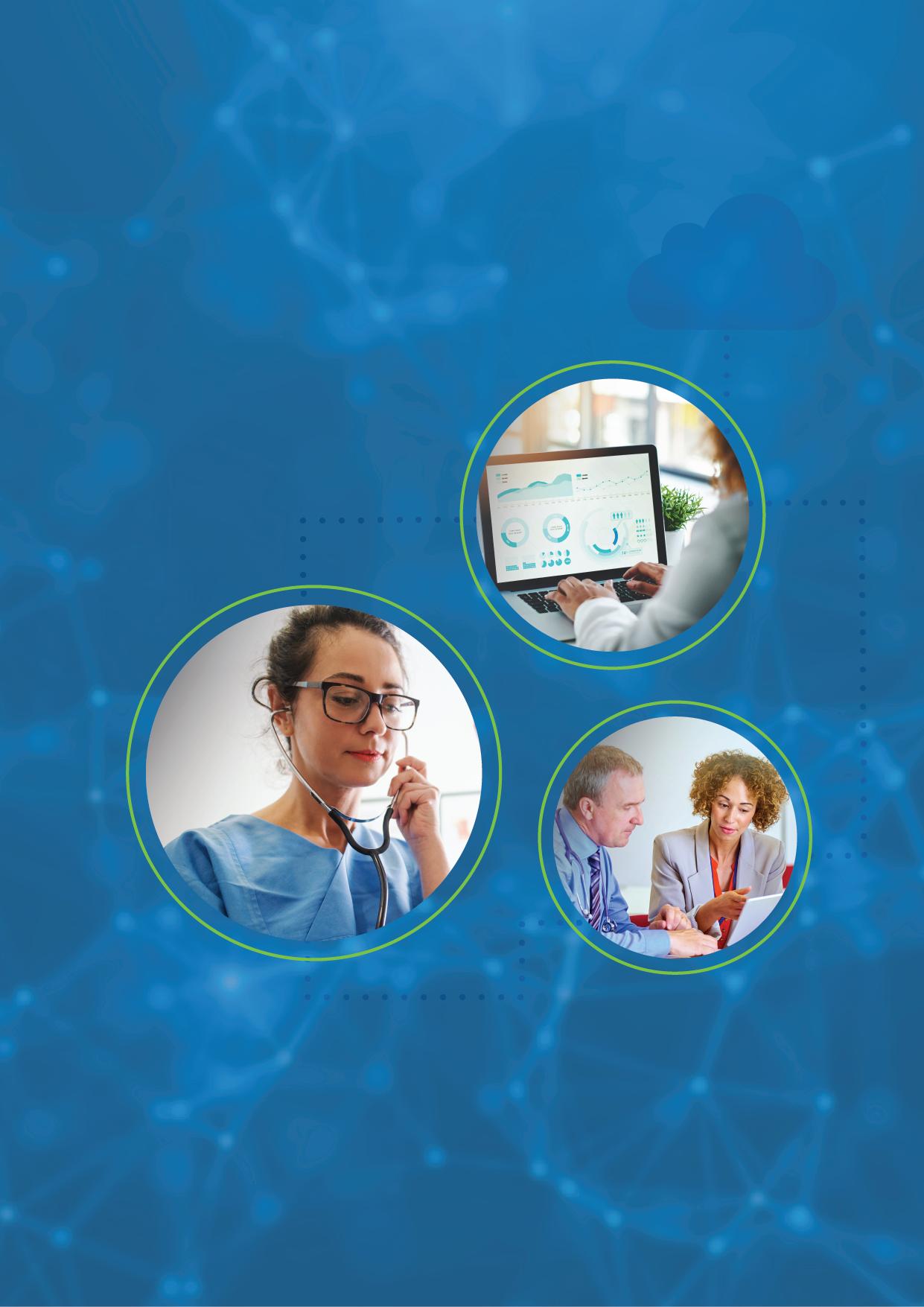
Support
your with Cerner
Empowering Your Care
Supporting Individuals with Learning Disability and Hearing Loss
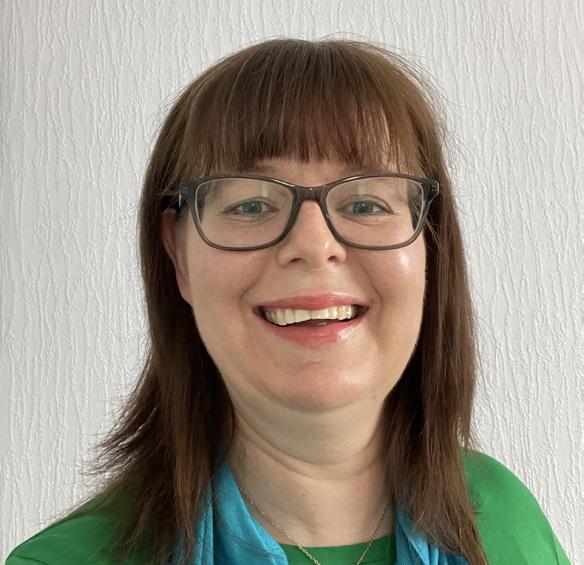 Rachel Barber, Founder, Living 4 Moments
Rachel Barber, Founder, Living 4 Moments

THE LOOP
Nicola Simpson, Founder, Montgomery Simpson Consultancy
Empowering Care Team
Learning Disability and Hearing Loss
Did you know that:
• Between 40-70% of individuals with a learning disability also have some degree of hearing loss? (Mencap, 2021)
• Most people with a learning disability who have hearing loss have never been tested? (BMJ, 2019)
Staggering, isn’t it? Individuals with a learning disability often experience health inequality which can have a devastating impact on how they communicate, experience the world around them and build meaningful relationships.
0025
A Course for Care Teams
We are excited to launch an inclusive, empowering training package.
Our Learning Disability and Hearing Loss training is designed to open up a new world of sound for individuals with a learning disability and hearing loss. This course will signpost individuals, their families, support teams and carers to access diagnostic services, consider types of communication and technologies available and create robust care plans which support effective communication.
Why is this course important?
As you can see from the statistics, research is showing that too many individuals with learning disabilities are not receiving timely or appropriate support with hearing loss. This often leads to avoidable challenges, impacting an individual’s physical and mental health. Through this course, we aim to help individuals get access to the right support earlier.
Individuals with undiagnosed hearing loss are more likely to experience loneliness leading to poorer outcomes. The same is true for individuals who have a learning disability, (Foundation of Learning Disability, 2016).

In addition, individuals may be perceived as challenging, leading to unnecessary interventions restricting choice. This can lead to isolation, lack of opportunity to build relationships, thus potentially increasing their loneliness further.
Our training will help teams communicate more effectively, understanding individuals and using preferred methods to build relationships based on trust and respect.
What will I get from this course?
The benefits to staff teams are huge. Being trained specifically in supporting individuals with learning disability and hearing loss enables teams to provide support confidently, in collaboration with the multidisciplinary team, therefore increasing job satisfaction as they feel empowered in their role.
The training will benefit you as a provider, in terms of time and money recruiting and inducting new staff with experience of supporting people with hearing loss. It will also strengthen your reputation hugely as an outstanding provider of inclusive, person-centred services for adults with learning disability and hearing loss, therefore more future business.
0026 THE LOOP

0027
‘Guerrilla’ Campaign Launched to Bust About Care Homes
Large keys carrying mythbusting messages are being placed in public spaces in locations across England, encouraging people to reconsider preconceptions.
0028 THE LOOP
Campaign Bust Myths Homes
Leading UK not-for-profit care group
Greensleeves Care has launched Keys To Open Minds – a campaign to de-bunk common myths about life in care homes.
The guerrilla-style community outreach campaign is set to share more than a thousand myth-busting messages with local communities and businesses all over England – from London and Ipswich to Hastings and the Isle of Wight.
Teams and residents from Greensleeves Care’s homes all over the country are going out into their communities, placing keys in landmarks and public areas and sharing them with businesses. The sustainably-produced wooden keys carry tags with messages that spell out common myths around care homes, and challenge them with facts.

0029
The keys are designed to create intrigue and to encourage people of all ages to engage with the reality of care home life, join the conversation on social media at #KeysToOpenMinds or visit their local Greensleeves Care home to see first-hand.
The campaign, which launches in time for Care Home Open Week 2023 (26th June – 2nd July), comes after reflecting on the perceived divide between public understanding and the reality of care home life. Greensleeves Care’s recent customer satisfaction survey across its 28 homes in England shows that 93% of residents who responded are happy with their care and the vast majority feel empowered to make choices about their day-to-day life.
For people like Margaret, 81, moving to a care home three years ago was nothing like she expected. She said:
“If you would have said a few years ago I was going into a care home, I would have said “get stuffed!” My opinion was that I would be told what to do, when, and how to do it.
“I now know that life in a care home is good, I am still very much in control of my life despite living in a care home. I can still make decisions myself and find the staff helpful and caring. I feel here I still have a purpose.”
Shona King, Director of Business Development at Greensleeves Care, said:
“The main aim of our Keys to Open Minds campaign is to prompt better conversations, reduce stigma around care homes and encourage people to reconsider their preconceptions.
“Misconceptions around care homes abound – from the quality of the food to how residents are supported to live with dignity. As our own data shows, the reality is that for the vast majority of residents, care homes are a positive, much-valued chapter in people’s journey through later life.
“Long-standing myths are damaging not only for the sector, but for the thousands of families looking for specialist, 24-hour care for their loved ones. They want to feel confident and empowered in the choices they make. At Greensleeves Care, we believe that feeling empowered starts with having a myth-free, more accurate idea of what it is like to join a care home community.”
The campaign is further supported through online content that tackles head-on the top 7 myths of care homes. Greensleeves Care is also committed to continuing the mythbusting beyond Care Home Open Week, including through public presentations and events.

0030 THE LOOP
New Postgraduate Healthcare Management degrees
Available from October 2021
Developed to meet the increasing demand for managing and leading preventive health services in communicable and non-communicable diseases.
Arden University offers you the opportunity to study online around your current job
MASTER OF PUBLIC HEALTH
Aligned to APHEA European Public Health competencies, this programme will prepare you for a career in the public health sector with particular focus on the latest digital and analytical skills sought by employers.


MSc GLOBAL HEALTH MANAGEMENT
Designed in collaboration with leading employers , this course focuses on issues that impact health but transcend national boundaries.
More full and short qualifications coming in early 2022, including leader and senior leader apprenticeship routes
For more information or to apply please visit arden.ac.uk
The Importance and Benefits of Patient and Public Involvement and Engagement
0032 THE LOOP
Dr Ali Aries, Dr Ros Leslie, Paul Bailey, Reena Palmer
Patient engagement since 2007 first introduced
Patient
The NIHR describe PPIE in research as ‘research being carried out ‘with’ or ‘by’ members of the public rather than ‘to’, or ‘about’ or ‘for’ them’.(2) PPIE in research is now much more common, often expected by funders,(3,4) and has great benefits for both the researchers and the PPIE contributors.(5) Following a recent pilot and feasibility study, (6) where PPIE was integral to the methodology, there has been an opportunity to reflect further on the value of PPIE and consider ways for improving and developing PPIE in the future.
Involving PPIE contributors in research is important because it helps researchers understand the lived experience of people living with a certain condition e.g., stroke. Their involvement, therefore, helps keep research of healthcare interventions relevant for people with a particular condition.
PPIE contributors from different cultures can also ensure that the research is developed and conducted
in an appropriate way to make it meaningful for people from different backgrounds. A recent quote from one of our PPIE contributors, Reena Palmer, who is also an author of this article, expresses the importance of this for consideration for all our future research:
“From my experience, I know from my background Asian culture that the community does not really have an understanding of what a stroke is and how it can affect loved ones around them…it would be good if we can get the right information out there to the people who need it". PPIE contributors add an important element to a team because they see things that researchers/educators/ healthcare workers might miss because they have a different perspective on life and activities. When considering how our PPIE contributors can work within our research teams we follow the UK standards for public involvement.(7)
0033
and public involvement and engagement (PPIE) has been evolving 2007 when the department of health introduced the idea.
(1)
This means we consider the following aspects:
1. Inclusive opportunities – we always endeavour to work with people of different ages and from different backgrounds and particularly like to hear from a variety of cultural communities and lesser-heard voices.
2. Working together – we value and respect our PPIE contributors and work in true partnership with them.
3. Support and learning – we understand that for some roles our PPIE contributors need to be trained and supported. We listen to their needs and offer learning experiences appropriate to our individual PPIE members.
4. Governance – We encourage our PPIE contributors to be part of our meetings e.g., trial management groups and part of research community meetings e.g., the Physiotherapy Research Society.
5. Communication – we are conscious of the importance of communicating in an appropriate way with our PPIE contributors – avoiding jargon and ensuring lay language is used. We are also very conscious of the digital divide; it is important we have an awareness and try to address digital inequalities.(8) We seek to offer opportunities for our PPIE contributors to work with us in a way that suits their needs e.g., face-to-face or by telephone or post if they do not use a computer, use email or online communication methods.
6. Impact – We are very aware of the impact our PPIE input has on our research and endeavour to include PPIE work throughout the research cycle, from an early stage helping with idea generation and advising
on research activities, throughout the research process and in the dissemination phase e.g., presenting and sharing findings from research studies at conferences:
Our PPIE contributors are invaluable when it comes to writing plain English summaries explaining our research and when developing participant information sheets. They work as part of the research team, for example in our recent pilot and feasibility study, (6) PPIE contributors were appropriately trained to undertake a notetaking role within the focus groups and to help with interpreting the transcripts. This was particularly helpful because they can offer an alternative opinion by coming from a different perspective, adding another dimension to the analysis of the data.
However, it is not just the value that PPIE contributors bring to our work, but also that our PPIE contributors find benefits from being involved. Paul Bailey, another author of this article and PPIE contributor stated: “I personally feel that my life has improved, and I have met some great people and learnt things about myself that have made my life easier and improved the life of others”.
Clearly, there are mutual benefits for all involved.(5) PPIE is recognised in Health Education England’s first Research and Innovation Strategy for Allied Health Professions (AHPs), (9) which reflects the future direction for AHPs in delivering quality research to meet the future health demands of the population. The strategy emphasises the importance of excellence in evidence-based Allied Health practice, drawing upon expertise from the public voice.
0034 THE LOOP
No prior experience is necessary for people who would like to work in a PPIE contributor role. Our PPIE contributors are already ‘experts’ relating to their own conditions and experiences. Further training, as required, can be undertaken while fulfilling the role.
If you would like to become a PPIE contributor, particularly if you have experience relating to stroke as either a person who has experienced a stroke or as a carer of someone, please, contact: Dr Ali Aries at alison.aries@nhs.net
1. DOH. Department of Health – Personal and Public Involvement (PPIE) [Available from: https:// www.health-ni.gov.uk/topics/safety-and-qualitystandards/personal-and-public-involvement-PPIE.]
2. Hayes H, Buckland S, Tarpey M. NIHR – INVOLVE: Briefing notes for researchers: public involvement in NHS, public health and social care research. 2012.
3. Staniszewska S, Brett J, Mockford C, Barber R, Staniszewska S, Brett J, et al. The GRIPP checklist: strengthening the quality of patient and public involvement reporting in research. International Journal of Technology Assessment in Health Care. 2011;27(4):391-9.

4. NIHR. Patient and public Involvement Reseources for applicants to NIHR research 2019 [Available from: https://www.nihr.ac.uk/documents/PPIE-patient-andpublic-involvement-resources-for-applicants-to-nihrresearch-programmes/23437.]

5. Aries AM, Bailey P, Hunter SM. The mutual benefits of patient and public involvement in research: an example from a feasibility study (MoTaStim-Foot). Research Involvement and Engagement. 2021;7(1):87.
6. Aries AM, Pomeroy VM, Sim J, Read S, Hunter SM. Sensory stimulation of the foot and ankle early post-stroke: A pilot and feasibility study. Frontiers in Neurology. 2021;12:675106.
7. UK Public Involvement Standards Development Partnership. UK Standards for Public Involvement. 2019. [Available from: https://sites.google.com/nihr. ac.uk/pi-standards/home]
8. Davies AR, Honeyman M, Gann B. Addressing the digital inverse care law in the time of COVID-19: Potential for digital technology to exacerbate or mitigate health inequalities. Journal of Medical Internet Research. 2021;23(4).
9. Health Education England. Allied Health Professions’ Research and Innovation Strategy for England 2022 [Available from: https://www.hee.nhs.uk/ sites/default/files/documents/HEE%20Allied%20 Health%20Professions%20Research%20and%20 Innovation%20Strategy%20FINAL_0.pdf.]
0035




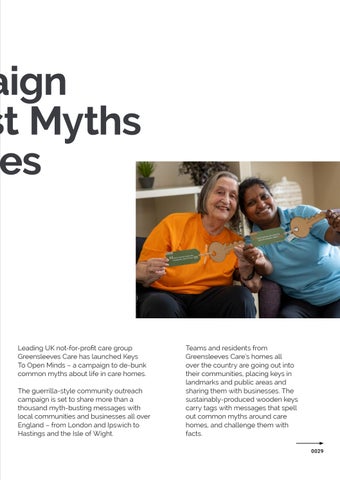


















 Rachel Barber, Founder, Living 4 Moments
Rachel Barber, Founder, Living 4 Moments
















